The mystery of Russian auto history: the first Soviet passenger car
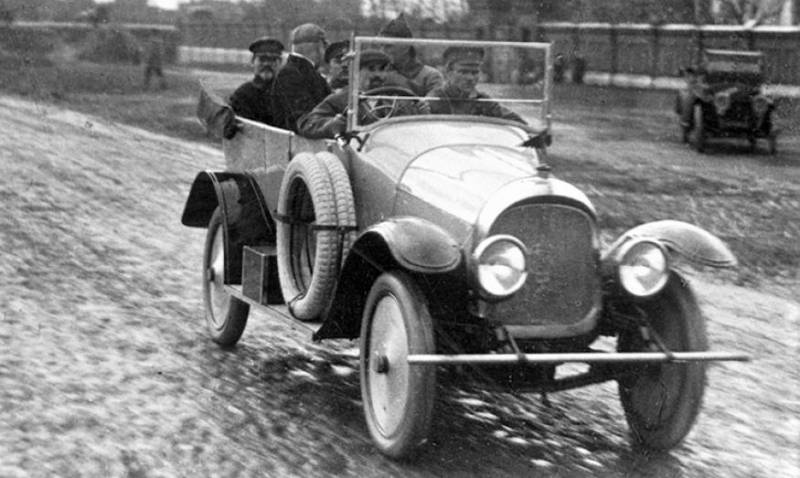
From the speech of I. V. Stalin, delivered on July 23, 1931.
From the report of the head of the command of the auto department of the NKPS comrade. Litvin dated March 15, 1921.
The first stage of building the first Soviet cars
The heads of the Soviet automobile industry in their anniversary speeches never mentioned that the first passenger car, independently manufactured in the Land of Soviets, was made at the former Moscow Automobile Plant of the Russian-Baltic Carriage Plant, inherited by the Bolsheviks from the previous regime, which was laid down (but unfinished) back in 1916 year in Fili near Moscow, where machines and equipment evacuated from Riga after the start of the Great War were used.
On November 26, 1918, the plant was nationalized and in February 1919 it was transferred to the jurisdiction of the Main Board of State Automobile Plants (Avtozav), established under the metal department of the Supreme Council of National Economy (Avtozav), which was appointed responsible for the automobile industry of the Soviet Republic. But already at the end of the year, “due to the impossibility of establishing mass production of cars,” the plant was transferred to the Central AC of the Industrial Military Council of the Supreme Council of National Economy. In the documents of 1920, it is referred to as the 2nd State Automobile Plant and belongs to the "shock group of defense enterprises."
On April 23, 1921, the plant was transferred to the TsUGAZ of the Metal Department of the Supreme Council of National Economy. Then, at the end of 1921, it was transferred to the Office of the Head of the Armored Forces of the Red Army and renamed the 1st Armored Plant, and from January 1, 1922 - the 1st Armored Tank and Automobile Plant (1st BTAZ).
The labor path of the plant, like many Soviet enterprises of those years, was difficult and thorny. At first he was engaged in the overhaul of armored vehicles and tanks, but in the end it was redesigned and became a large aircraft factory.
Since tsarist times, 300 sets of parts intended for the production of the Russo-Balt passenger car, model C 24/40, have been lying on it.
And then one day, one of the leaders of the enterprise came up with a sensible idea to assemble a small batch of passenger cars from the available sets of parts to check the working drawings and identify the possibility of adapting the cars to armor with the prospect of launching the production of the same type of armored and auxiliary vehicles for the Red Army.
In order to implement this idea, in August 1921, the construction of the first cars of its own production in the Republic of Soviets began in Fili.
However, things went somehow neither shaky nor roll (apparently due to hidden pests), and only a year later, on October 8, 1922, the first Soviet passenger car rolled out of the factory gate, by inertia called "Russo-Balt" (there is also the name " Russian-Balt”), although it would be more correct to call it “Bronetaz”.
However, the name well reflected reality - despite minor design changes, the car was essentially a copy of the Russo-Balt model of the 1916 model.
Newspapers proudly wrote about this:
It was a large six-seater car with a three-door torpedo-type body, about 4 mm long with a raised awning and 500 mm wide.
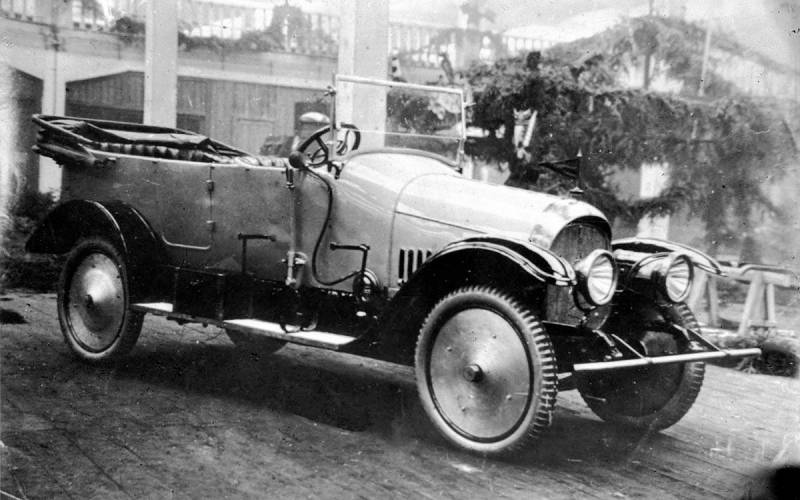
The wheelbase was 3 mm; track width - 200 mm; minimum ground clearance 1 mm.
The motor was 4-cyl. volume of 4,5 liters, developing (according to the NAMI test) about 39 liters. With. at 1 rpm. But gear ratios 300-tbsp. gearboxes did not fit well with the final drive ratio of 4, and in the aggregate did not fit at all with the external speed characteristic of the engine.
As a result, the car, which weighed 2 kg when fully loaded, accelerated sluggishly and could not overcome a slope of more than 200% in direct gear. And its maximum speed in this gear was 1,5 km / h (with a speed in a lower gear of 43 km / h).
A huge technical breakthrough was the introduction of an electric generator, which made it possible to replace pre-revolutionary kerosene headlights with modern electric ones, and even install an additional searchlight on some cars.
The car was equipped with beautiful wheels with shiny metal caps covering the wooden spokes and was equipped with domestic pneumatic tires of the former Partnership of the Russian-American Rubber Manufactory "Triangle" of the "Yolka" model, which cost 30–35 kopecks before the revolution. a piece.
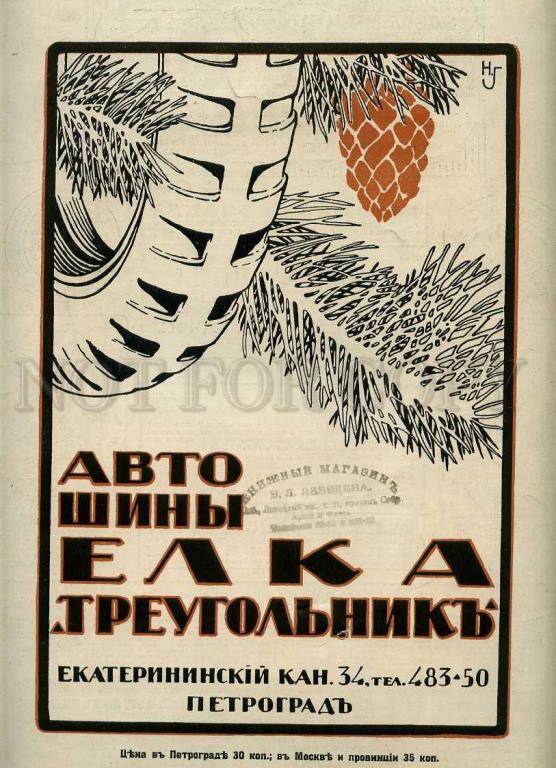
In those years, even in Moscow, hundreds of horses galloped through the streets every day, so nails flying out of horseshoes lay everywhere on the pavements, and tire punctures were sheer agony for drivers. In order to make life easier for them, a two-socket tire holder was installed on the right footboard, and behind it a small tool box.
So that at first glance the newly-minted proletarian car would not be confused with the antediluvian Russo-Balt, a bumper was installed in the front in the form of a pipe held on two brackets, and a special emblem was applied to the radiator honeycombs, which is an intricate graphic puzzle, where, with imagination, one could guess the letters A, B, T and Z.
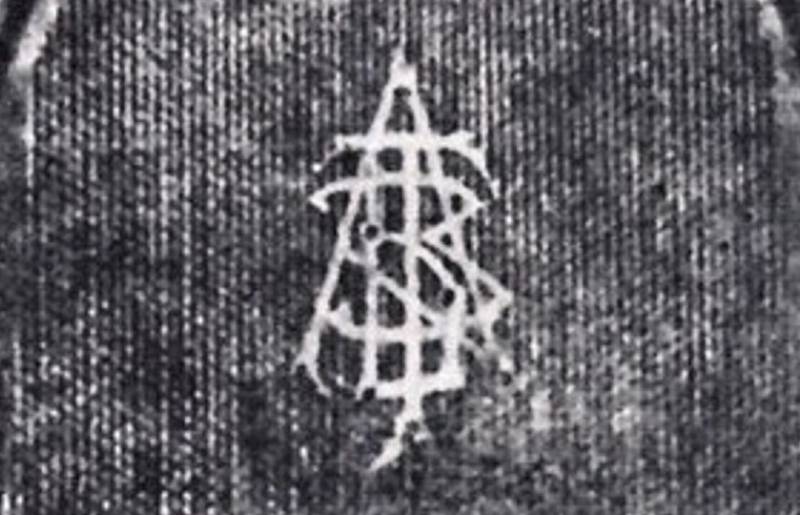
And on the gearbox cover they attached an additional cover covering a large round hole with a hammer, a sickle, a traditional call for the proletarians of all countries to unite, as well as with the name of the manufacturer and the name of the model:
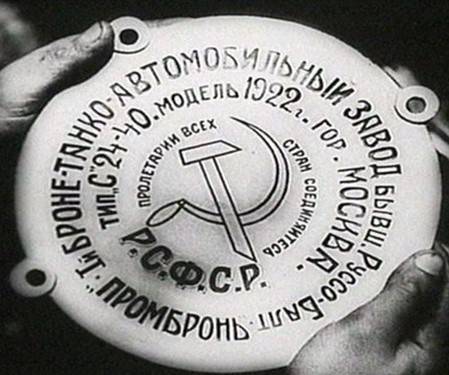
And although it was clearly stated on the plate that the model was called “type “C” 24-40”, the authors of some publications stubbornly called it “Prombron”.
In fact, this word meant neither a model nor a brand, but was an abbreviated name for the association of factory enterprises of the armored department of the RSFSR, headed by the chairman of the board, who was the head of the armored forces department of the Red Army. From the beginning of 1922, the 1st BTAZ was also included in PROMBRON (among others).
The Bolsheviks loved to come up with abbreviations for the cumbersome names of their institutions. As a result, both abbreviations that were intuitively understandable to the townsfolk, for example, PROMSVYAZ or PROMVZDUKH, as well as completely incomprehensible ones such as POGARZ, TSUGAZ, as well as difficult to pronounce, such as VSNKh, or frightening with their cumbersomeness, like TsUPVOSO or TsEPVMORZ, arose.
At the assembly stage, the workers made a beautiful steel-colored body, equipped it with a retractable table and other service items, nickel-plated the radiator, headlight trim and individual body elements, and on October 8, 1922, in a solemn ceremony, they presented the car as a gift to the chairman of the All-Russian Central Executive Committee, M. I. Kalinin.
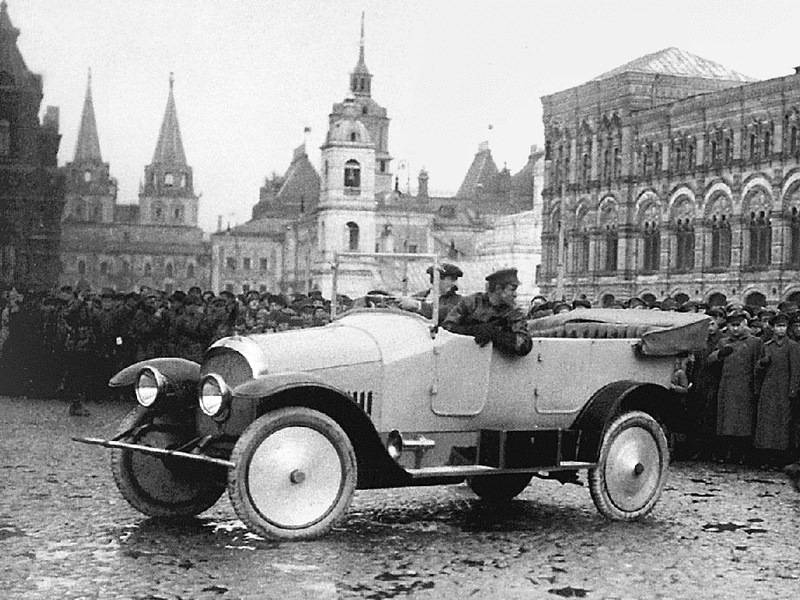
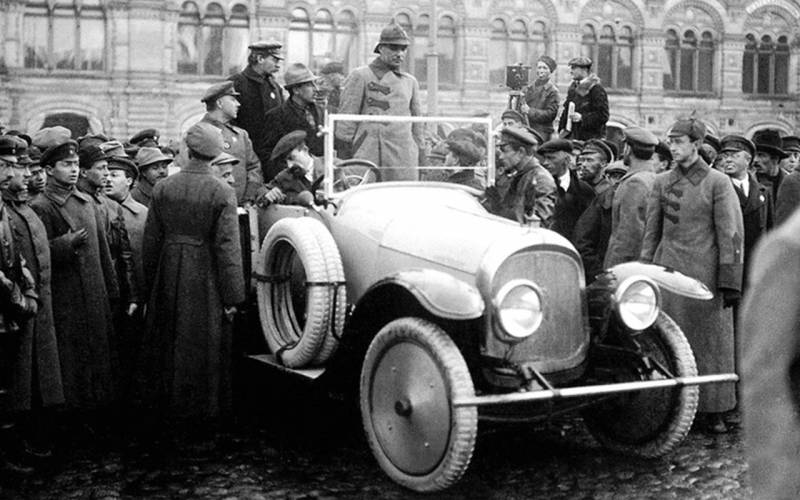
After the solemn speeches delivered on this occasion, the driver started the engine and, to the applause of the workers and Red Army soldiers present at the show, drove Mikhalvanych around the territory of the Moscow Kremlin. At the end of the event, an expensive gift went to the place of service in the garage of the All-Russian Central Executive Committee.
Despite the huge number of parts that make it possible to manufacture several hundred cars, the assembly of the first Soviet former bourgeois somehow did not work out.
After the production of a “trial” batch of 5 cars, the workers had already sorted out the sets of parts that made it possible to assemble another 58 cars, but then unexpectedly, at the end of 1922, in accordance with the new economic policy, the plant was given to the foreign aviation company Junkers in concession. Therefore, the production of cars on it was successfully curtailed in order to establish the production of more important German aircraft for the country.
The second stage of the construction of the first Soviet passenger cars
The existing stock of car kits in April 1923 was transferred to another car repair plant, founded under the tsar, but never completed, which before the revolution was the repair base of an automobile company, and after that it was called the Auto Repair Plant (Preobrazhensky). Then in 1920 the name was changed to the 4th Mostrans State Automobile Repair Plant (4th GARZ). In 1922, the enterprise was renamed again now into the 2nd BTAZ (Preobrazhenskaya Zastava) and from February of the same year began to function as part of the PROMBRON association.
The new name sounded menacing, in a combative way, but in reality, as indicated in one of the documents of September 1923, the plant "... in its present form cannot be called a plant ...", since in order to turn it into such, it was necessary to carry out work on its completion (at least build ceilings between small detached buildings).
During transportation, some of the parts were lost during loading and unloading, some were damaged or stolen by unidentified pests, and as a result of another sorting carried out by the workers of the 2nd BTAZ, it was found that now there are only enough parts to assemble 38 machines.
For this reason, a responsible task was set for the new plant: to produce 10 cars. But, apparently, hidden pests were operating in the labor collective, because even the plant could not cope with it: the workers assembled only 1923 cars with great difficulty in 5 - two cars with an open body of the "torpedo" type and three trucks.
On this, the production of the first Soviet passenger cars produced at two "armored" plants was successfully completed.
Two "Russo-Balt" from the first batch entered the world auto history, taking part in the Soviet rally in 1923, consisting of 49 cars (of which 45 were foreign-made). They did not set speed records and did not get into prizes, but nevertheless, thanks to the efforts of drivers and mechanics, they nevertheless reached the finish line on their own. Together with them, the Russo-Balt of the same type, built before the revolution, also successfully finished, however, it showed the longest time to complete the distance.
And the 2nd BTAZ, until the end of the 20s, carried out separate work on repairing cars and manufacturing their parts, and was even included in the list of Avtotrust enterprises (former TsUGAZ). There is a mention that the construction of 1925 Russo-Balt cars was included in the production program of the trust for 50. However, there is no information about the implementation of this intention.
In 1929, the 2nd BTAZ was transferred to the jurisdiction of the All-Union Automotive and Tractor Association, renamed Plant No. 2, and eventually switched to the manufacture of tanks.
The fact of the release of the Soviet Russo-Balts was soon forgotten, and the first Soviet passenger car produced in the USSR was listed in official documents as NAMI-I (1927).
PS
There is information that the newly-minted "Russo-Balts" in the Land of Soviets were produced 27 copies, but, in my opinion, this number is greatly overestimated, and, apparently, this model is not mentioned in Soviet car reference books. And the public learned about the fact of the release of these cars from the publications of engineer Yu. A. Khalfan (1960) and the famous auto historian L. M. Shugurov (1969).
They received information from veterans of the automotive industry, who, over the years, could well have forgotten something or remembered something that was not there. Therefore, some technical details given in the publications, which cannot be seen in the photographs that have come down to us, may not be correct. Accordingly, information about the exact number of cars produced and their further use is still historical space.
Fortunately, a lot of photographs have been preserved, and they allow us to see in detail how this early result of the nascent Soviet automotive industry, emerging in the throes, looked in detail.
Information